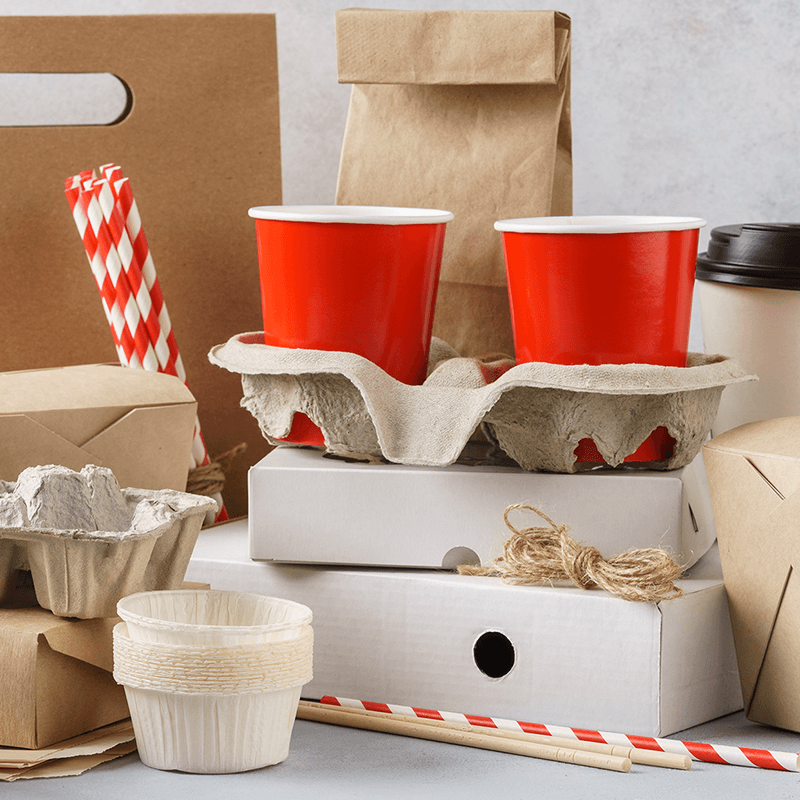Firefighting Foams (AFFF or Aqueous Film-Forming Foam)
- Fire Departments and airports can implement risk management procedures to prevent uncontrolled releases of AFFF during maintenance, testing, and training.
- 100+ viable alternatives to AFFF exist today that are fluorine-free and meet international aviation standards like GreenFire® Firefighting Foam (GFFF), Universal Green®, and Eco-Gel® among others.
- Update state, federal, and military guidelines to support the use of PFAS-free firefighting foams at fire departments and airports.

Food Packaging
- PFAS-free packaging materials include: uncoated packaging and packaging made from polylactic acid (PLA) a compostable plastic typically made from corn, bamboo (Bambu®), or palm leaf (such as Leafware®).
- PFAS-free package coatings include: PLA (Ecotainer®, Eco-Products®, PrimeWare® and World Centric®), Clay (Bare® and Eco-Forward®), Bio-wax (Ecowax®, Paraflex NoWax).
- Two companies, Zume and Solenis, have open-sourced their recipe for PFAS-free, grease-resistant food containers to all food packaging manufacturers.
Metal-Plating Industries
- Use EPA-approved, non-fluorinated fume suppressants. The surface-finishing industry phased out PFOS in 2015 but some replacements contain other PFAS.
- There are five EPA-approved chrome-plating applications that are PFOS-free: Fumetrol 21 LF2, Dicolloy CRPF, HCA - 8.4, and Macuplex STR NPFX.
Textiles & Furniture
- PFAS-free waterproof fabrics have been developed for the textile and clothing industry. For example, the maker of GORE-TEX® has designed a PFAS-free waterproof membrane called ePE as a replacement for its ePTFE membrane.
- Manufacturers of stain resistant fabrics and furniture can replace applications such as Scotchguard® with non-fluorinated treatments that use acrylic, polyurethane or silicone-based coatings.
This material is based upon work supported under a grant by the Rural Utilities Service, United States Department of Agriculture. Any opinions, findings, and conclusions or recommendations expressed in this material are solely the responsibility of the authors and do not necessarily represent the official views of the Rural Utilities Service.

